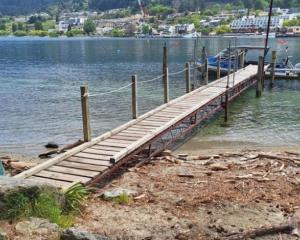
Californian Tyler Nii, then aged 27, landed in Lake Wakatipu after a tandem skydiving trip with NZONE took a turn on January 10, 2018.
His body has never been found.
In a just-released report, the Transport Accident Investigation Commission (TAIC) makes a raft of recommendations.
The report outlined how Mr Nii and tandem master James Stavro were the last of nine pairs to make their jump.
The main parachute opened unevenly with suspension lines twisted.

Just before hitting the lake, Mr Stavro managed to ease the spin rate and thus reduced the force of impact.
Mr Stavro managed to stay afloat despite not being equipped with a lifejacket.
Mr Nii’s lifejacket did not inflate enough to support his head above water.
Rescuers arrived quickly, but could not find him, and he has not been seen since.
The commission found NZONE’s water emergency response plan did not have due regard for the anticipated time that people could survive in cold water.
That increased the likelihood that rescuers would arrive too late to save anyone.
"To all parachutists, we're saying accidental landings in water are possible and riskier than you might think, so it's vital that you practise doing it," TAIC's chief investigator of accidents, Harald Hendel, said today.
TAIC could not conclusively determine why Mr Nii’s lifejacket could not fully inflate, or why tension knots appeared in the reserve chute lines.
It also found operating procedures differed depending on which of two parachute organisations operators belonged to, because Civil Aviation rules did not clearly define the minimum safety requirements for tandem parachute descents near significant bodies of water.
NZONE’s lack of a maintenance and inspection programme for lifejackets was also a risk, it said.
The Commission recommended the Secretary for Transport work with the Civil Aviation Authority and the two parachute recreation organisations to review and revise three Civil Aviation rules, and that the Director of Civil Aviation review the parachute accident and incident reporting system.
There was no need for recommendations to NZONE, as it had improved its policies and procedures since the accident.
A NZONE Skydive spokesperson said the company welcomed the recommendations in the report.
"NZONE Skydive has full confidence in its operational and safety procedures.
"The company would like to once again like to extend its deepest condolences to the family and friends of Tyler Nii."












